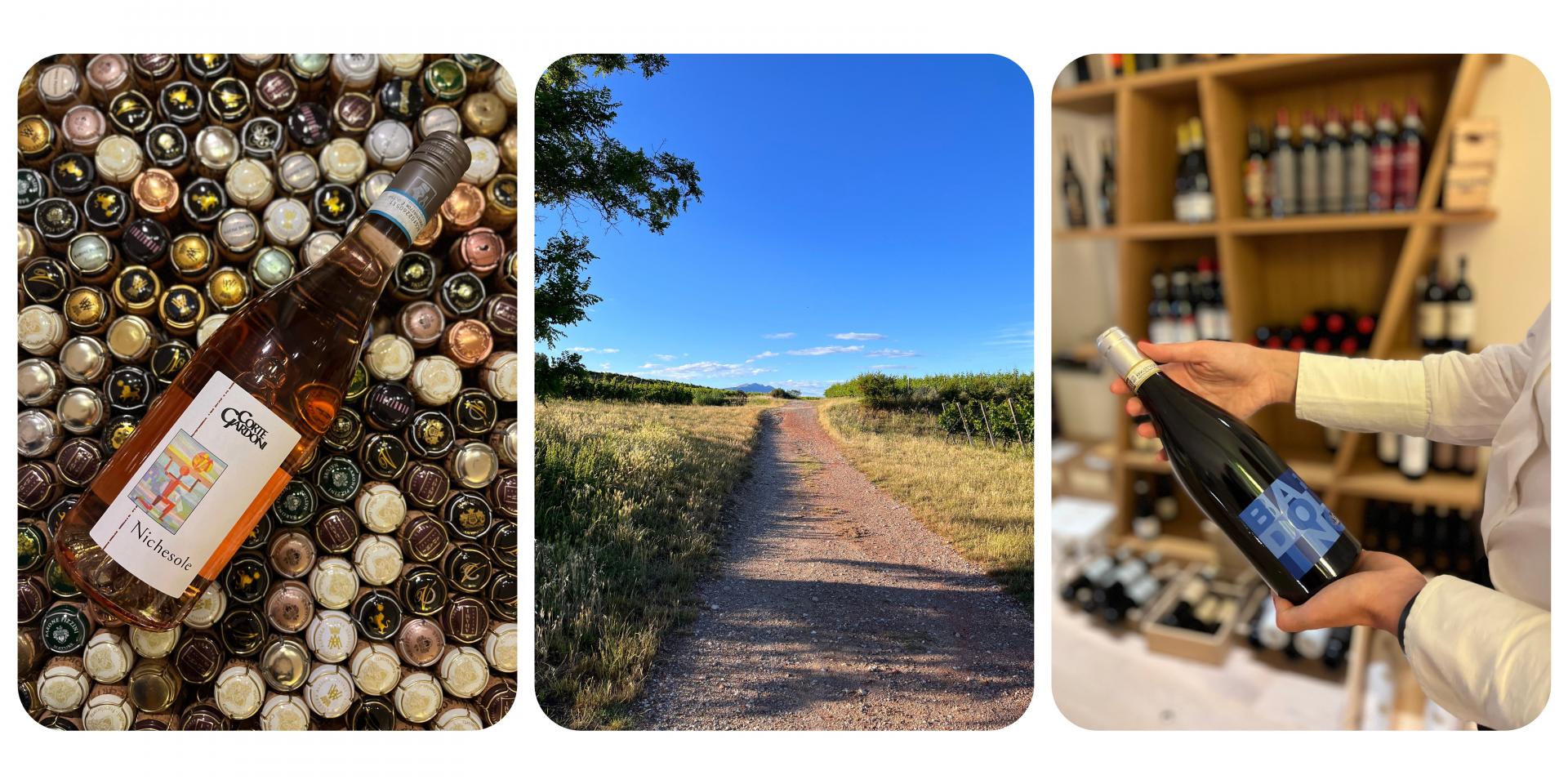Discovering Bardolino, the wine of Lake Garda
If you’ve ever had the chance to spend a few days at Lake Garda, you’ll certainly have come across the most famous wine of the region: our much loved and venerated Bardolino.
There are actually 7 types of wine hiding behind the Bardolino label: Bardolino, Bardolino Classico, Bardolino Chiaretto, Bardolino Classico Chiaretto, Bardolino Chiaretto Spumante, Bardolino Novello and Bardolino Classico Novello.
Want to find out more?

Bardolino wine: grapes and vines
Bardolino wines are produced from the grapes of the Corvina vine, a vine which has an extraordinary ability to adapt to different soils, and from those of the Rondinella vine.
To be precise, between 35 and 95% of DOC Bardolino wine must be made from the grapes of the Corvina Veronese vine and between 5 and 40% from the grapes of the Rondinella vine. However, in place of the Corvina Veronese variety, the presence of the Corvinone variety – or other red grape varieties grown in the Verona province – is also allowed.
Corvina and Rondinella are both indigenous varieties, linked to the Verona province since ancient times. A curiosity of these vines which appeals to us concerns their names. Corvina brings to mind the crow (in Italian, ‘il corvo’) and Rondinella, the swallow (in Italian, ‘la rondine’). Intriguing, don’t you think? In the case of Corvina, the color of the grapes resembles the feathers of a crow, while in the case of Rondinella, the color brings to mind the feathers of a swallow.
The DOC label and its region
Bardolino has carried the DOC label (Controlled Designation of Origin) since 1968. In this instance, the production area in question covers 16 areas in the Lake Garda region: Bardolino, Garda, Lazise, Affi, Bussolengo, Costermano, Cavaion Veronese, Castelnuovo, Peschiera and Valeggio sul Mincio, Torri del Benaco, Caprino, Rivoli Veronese, Pastrengo, Sona and Sommacampagna.

The particular characteristics of the soil and the favourable climate enjoyed by the region results in a superb Bardolino wine cultivation. With Lake Garda close by, the presence of Mount Baldo which protects against the cold winds of the north, the morainic hills, the regular exposure to sunshine, and the largely gravelly, sandy and clay soil, all create the optimum conditions for its cultivation.
Bardolino wine: what’s it like?
Bardolino wine is characterised by its aroma of red fruits (strawberry, cherry, raspberry and red currants) and spices (cinnamon, black pepper, and first and foremost, cloves). Also by its fresh, full-bodied and light flavour and a ruby, red color which, with aging, approaches the color of garnet, with hints of violet.
Chiaretto, Bardolino’s rosé, however, has a typical bright pink appearance. Fresh, pleasant and youthful, its aroma is of small fruits of the forest berries, accompanied by a very delicate hint of spice.
Bardolino wine and pairing
A red Bardolino is excellent with a first course of pasta, risotto or lasagne. It also goes perfectly with legumes, soups, and all meat, whether grilled, roasted or casseroled. It’s a must – really awesome - with anything that includes chestnuts or mushrooms.
On the other hand, Chiaretto, which is the rosé version of Bardolino, makes a delightful aperitivo. Pair it with fish, vegetables, and dishes with a more delicate flavour.
For anyone who wants to find out more about Bardolino wine, we’re opening the doors to our Gusto cellar: thanks to our tastings, wine-lovers will be able to enjoy the itineraries that our sommelier Barbara has created for us!